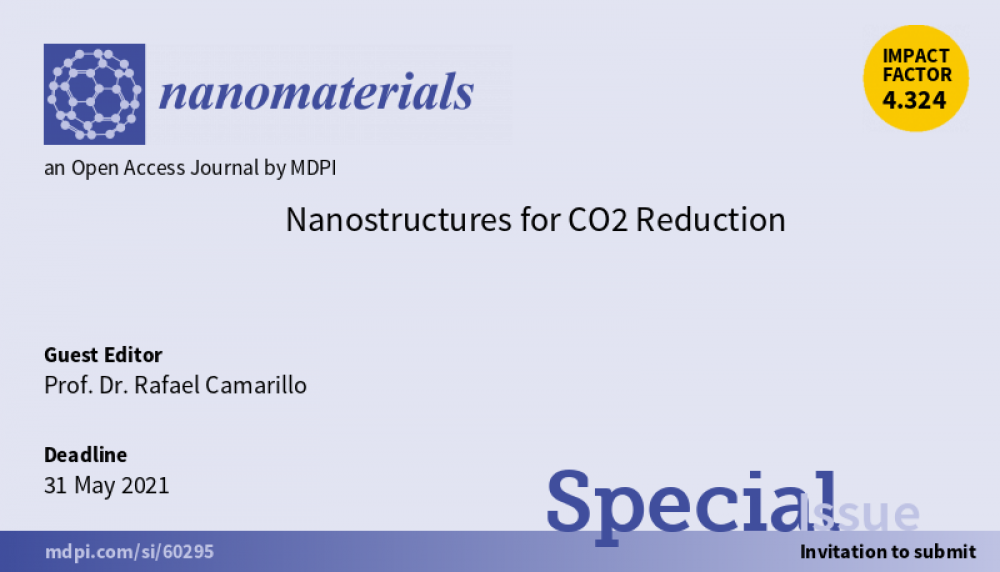Dear Colleagues,
The increasing concentration of carbon dioxide (CO2) in the atmosphere has been recognized as the primary factor for global warming. In recent years, development of routes for highly efficient conversion of CO2 into fuels and added-value materials has received much attention as an integral part of carbon management. CO2 reduction can be achieved by a variety of technologies: mineralization, electrochemical conversion, thermochemical conversion, photochemical/photo-electrochemical conversion, enzymatic conversion, etc. Most of these processes are developed through nanostructured materials such as metal alloys and oxides, semiconductors, and carbonaceous supports in the form of nanoporous materials, nanostructured materials, quantum dots, nanoparticles, nanorods, nanofibers, nanotubes, nanohorns, nanoribbons, thin films, nanolayers, nanowalls, nanoclusters, foams, hydrogels, nanocomposite materials, electrodes, etc. These materials exhibit improved properties mainly due to their high surface-volume ratios.
This Special Issue of Nanomaterials will attempt to cover recent advancements in the synthesis, characterization, and assessment of different nanostructures during CO2 reduction processes, including deposition, doping, codoping, support, functionalization, surface modification, junction, sensitization, immobilization, surface plasmon, clustering, self-assembly, etc.
More information and submission: https://mdpi.com/si/60295
Prof. Dr. Rafael Camarillo
Guest Editor
